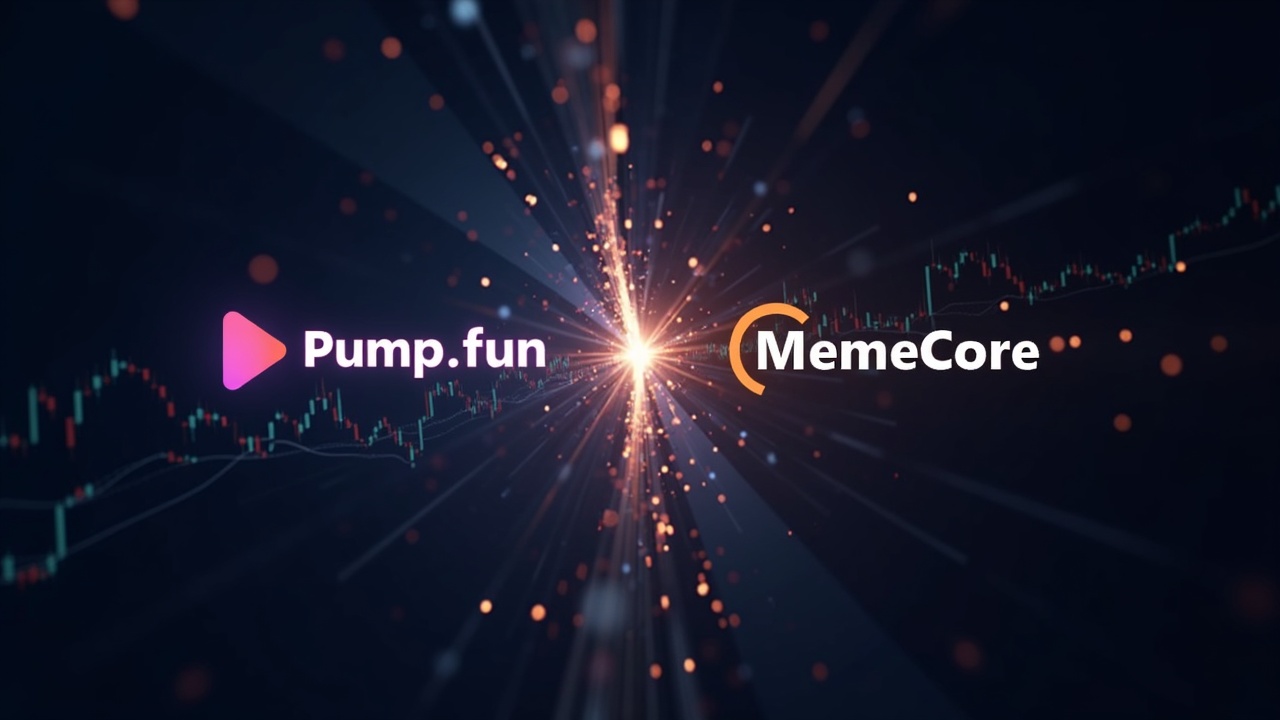Two Sides of the Meme Coin Ecosystem
The dynamic between Pump.fun and MemeCore presents a classic investment dichotomy within the crypto space. Pump.fun operates as the infrastructure play, a “pick-and-shovel” platform that generates revenue from the act of creation itself. In contrast, MemeCore is a high-momentum asset, a “gold rush” bet on a specific vision for the future of meme coins. For institutional players, the choice hinges on a fundamental risk-reward preference: steady fee-based income versus exposure to rapid price appreciation.
Pump.fun: The Token Factory Facing Headwinds
Pump.fun has established itself as a leading launchpad on the Solana network, allowing anyone to create and launch a meme coin with minimal effort and cost. Its business model is straightforward and has proven lucrative; by May 2025, the platform had accumulated over $700 million in revenue from millions of user-created coins. It generates income through a 1% fee on bonding curve trades and benefits from consistent demand for new token launches.
However, this “token factory” model faces significant challenges. The platform’s hype has cooled from its peak, with monthly revenue hitting a 2025 low of $24.96 million in July, an 80% drop from its January high. It also faces intensifying competition from rivals like LetsBonk, which has at times processed a higher volume of daily token launches. Furthermore, the fundamental product is risky; a report indicated that nearly 99% of tokens created on the platform could be considered fraudulent or pump-and-dump schemes, attracting regulatory scrutiny and creating reputational baggage.

MemeCore: The High-Volatility “Meme 2.0” Bet
MemeCore positions itself not just as another token, but as a foundational Layer 1 blockchain designed to bring sustainability and structure to the meme coin economy, a vision it brands “Meme 2.0”. Its innovative “Proof of Meme” consensus aims to reward genuine cultural contribution and on-chain activity. This narrative has fueled impressive price momentum, with the token surging over 50% in a single day in early September 2025 to hit all-time highs.
For investors, the appeal lies in this high-growth potential and the ecosystem’s built-in incentives, such as staking rewards. The key attraction is rapid price appreciation, but this comes with inherent volatility. The token’s daily Relative Strength Index (RSI) has indicated extremely overbought conditions, signaling a high risk of a sharp short-term correction. Additionally, the project’s success is heavily reliant on the widespread adoption of its novel blockchain technology and its ability to navigate an uncertain regulatory landscape that may scrutinize its unique model.
Weighing the Strategic Choice
For treasury desks and funds, the decision between these two models depends entirely on risk tolerance and strategic goals.
Pump.fun represents a bet on the enduring, broad-based demand for meme coin creation. Its value is tied to platform activity and fee generation, making it a more indirect and potentially steadier play on the trend. The primary risks are external: competitive displacement and regulatory intervention.
MemeCore, on the other hand, is a direct bet on a specific, high-concept project achieving mainstream success. It offers the potential for explosive returns but carries the typical risks of a high-volatility asset, including price corrections and the existential risk that its ambitious “Meme 2.0” vision may not achieve the necessary adoption.
In essence, the choice is between financing the casino or betting on a single, high-stakes contender. Pump.fun collects fees regardless of which tokens win or lose, while MemeCore’s value is entirely tied to its own victory.


